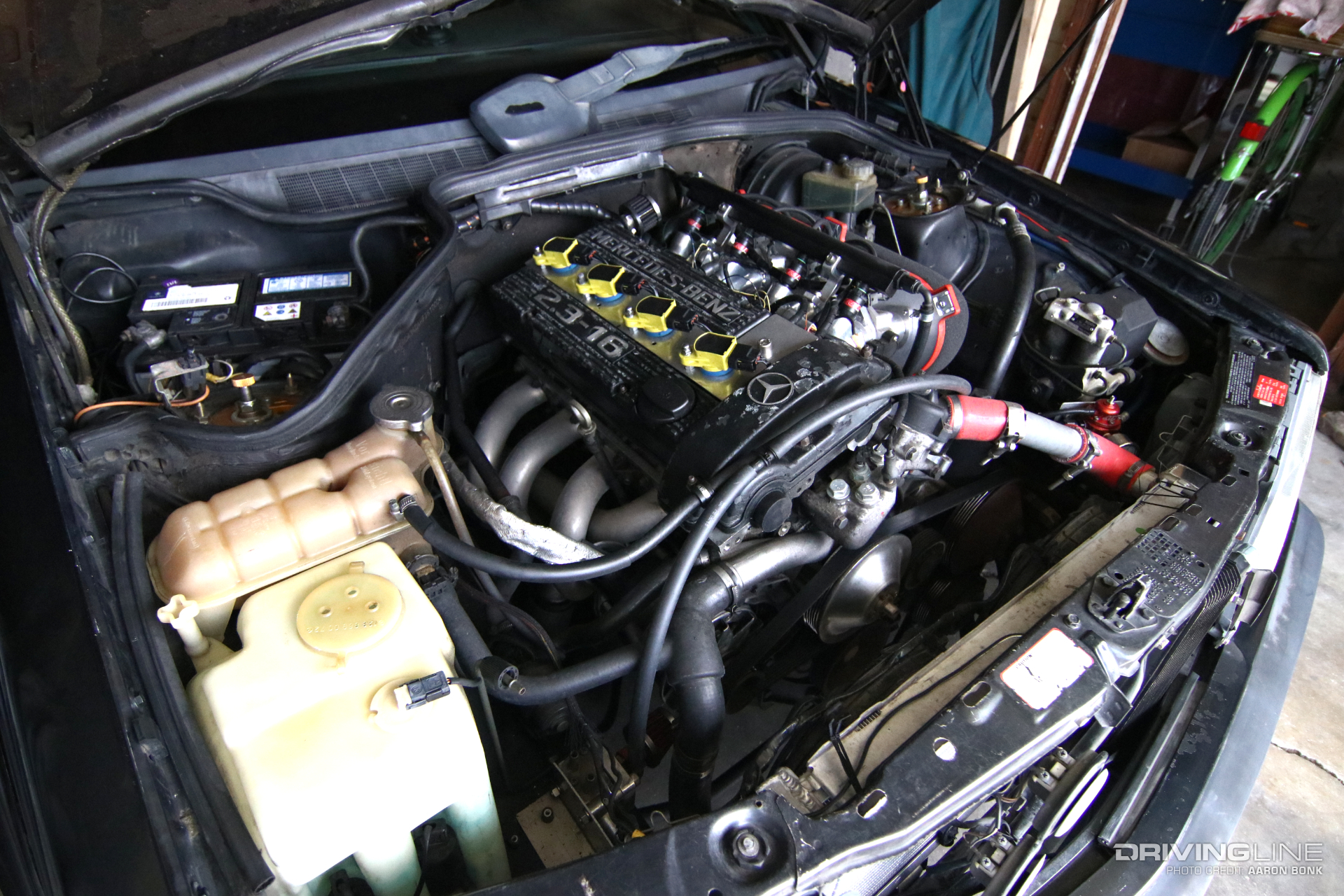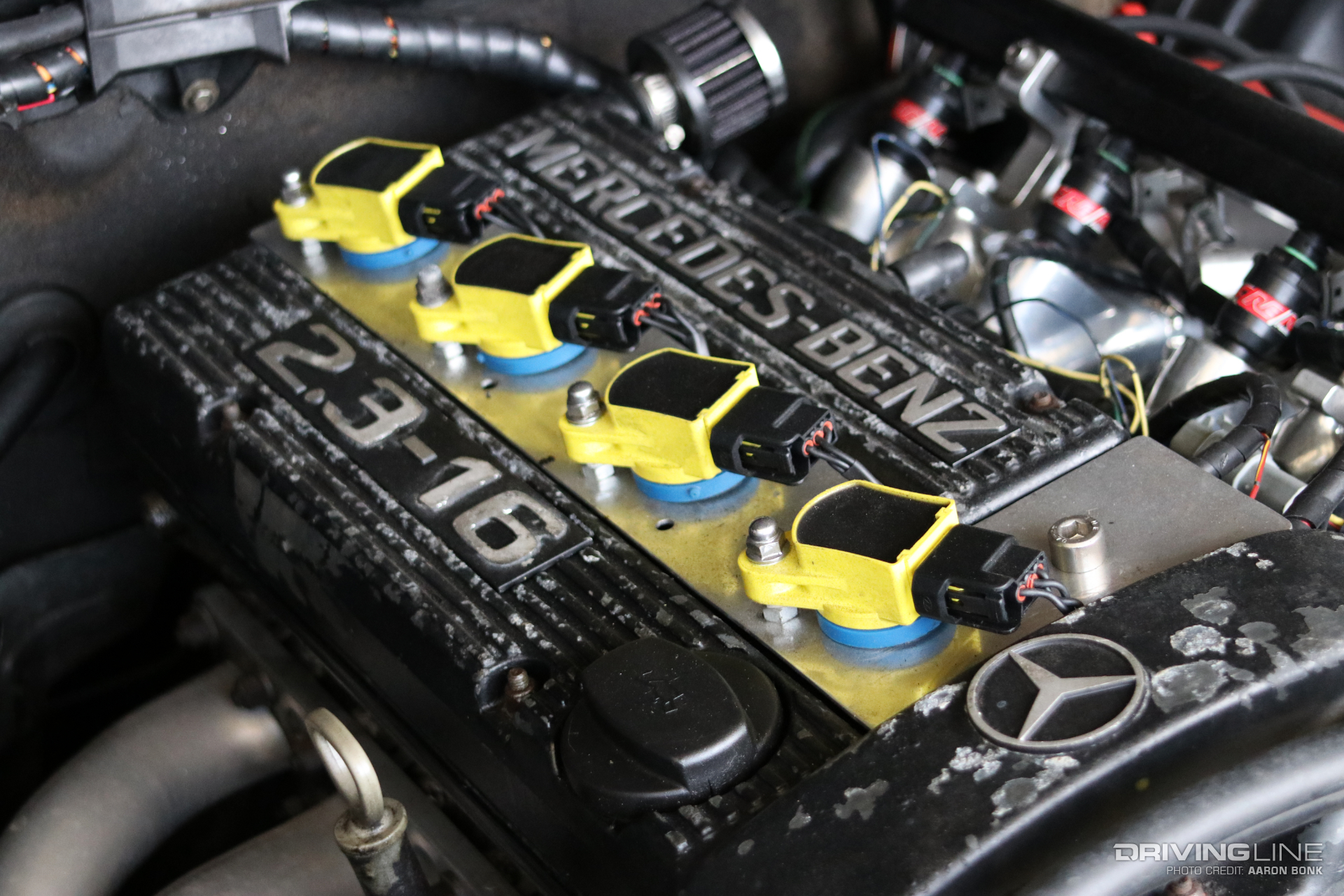The Mercedes-Benz 190 wasn’t a particularly spectacular car. At best, it was a mediocre compact luxury car designed for people like assistant high school principals and regional managers for pen companies.
Iterations of the platform like the 190E, and even later inline-six-cylinder models, made getting to meetings about pens faster thanks to Bosch’s electronically controlled mechanical fuel injection—KE-Jetronic—but all of that paled to what Mercedes had been doing on the race track.
By the late 1970s, the German carmaker was already knee-deep in rallying, but Audi and its all-wheel drive, turbocharged Quattro meant that the 190-based race car that Mercedes had been developing alongside famed engine building firm Cosworth wouldn’t cut it. This led to Mercedes turning to the German Touring Car Championship, a series every bit as respectable as other championships, but with FIA Group A rules that required whatever Mercedes planned on racing to be based on something even the regional manager of a pen company could go out and buy.

The result was the 190E 2.3-16. Such road-going versions of the 16V weren’t exactly the same as their race car counterparts, but they featured the same Cosworth-cast aluminum cylinder heads with specially designed cams, along with pistons and intake, exhaust and fuel injection systems all unique unto themselves.
The Original DTM
While you were busy eyeballing something like the impending M3, Thomas Fitzgibbon had his 1980s sights set on the original DTM racer. The only problem was that Fitzgibbon’s Honda budget relegated him to things like Civics and Accords for the better part of his adult life. By the time he had gathered the means to acquire that 190E 2.3-16 he’d been so hot for, the pickings were few and those that were available and within his budget needed help.
But Why Honda?
You don’t have to be a Championship White-wearing, VTEC-loving fanboy to know just how dang reliable Hondas of the ’80s and ’90s were. While you were busy doing things like yanking the head off of your 38,000-mile Neon, guys like Fitzgibbon, with their Honda hatchbacks with twice as many miles, were beginning to think about things like water pumps and timing belts that, by most accounts, still had a whole lot more life left in them. This is all before touching on the reliability and predictability of Honda’s electronic fuel injection.
The Intake
Mercedes’ mode of air delivery was sophisticated, back when LA Gear hi-tops were cool. Its carburetor-like fuel distributor and air regulator made it wonky and, some 35 years later, is why Fitzgibbon ripped it all off.

At the core is what Fitzgibbon calls the toilet bowl, which helps distribute the air and fuel, and does so only slightly more effectively than an actual toilet bowl.

Ditching all of this starts with the individual throttle bodies Fitzgibbon fashioned into place by lopping off those intake manifold runners and welding on Weber DCOE flanges for all of it to bolt up to.
The Ignition
Fitzgibbon’s original plan called for a distributor nabbed from a Civic bolted right onto the end of that 2.3L engine’s cylinder head and its exhaust cam. It worked, too, until it didn’t. Plan B meant using individual coils borrowed from Honda’s later-model K-series platform along with AEM’s Engine Position Module, which means nobody needs that distributor anymore.

The ECU
Knowing that the factory ECU couldn’t be used was the obvious part. Almost as obvious was Fitzgibbon going on to use an AEM engine management system borrowed from one of his Honda projects. Not so obvious is the OBDII Honda Civic engine wiring harness he grafted onto that Mercedes engine. According to Fitzgibbon, since most of what he would ultimately plug into the wiring harness would be of Honda origin, it was the easiest move to make.

The Fuel System
Aside from the RC Engineering fuel injectors and the 190E fuel pump, the fuel system is run by all of those Honda sensors Fitzgibbon used. Honda manifold pressure, intake air temperature and coolant temperature sensors all send important information to that ECU of his, making sure that the right amount of fuel is injected at the right times. Fitzgibbon also integrated one of Honda’s oil pressure sensors and idle air control valves, the latter of which helps steady things when when he isn’t romping on the throttle.

The Numbers
According to Fitzgibbon, all of these Honda shenanigans were good for another 20hp, along with added drivability and smooth acceleration the likes of which the 190E 16V has never seen. American-bound 16-valve 190Es were rated at 160hp, which Fitzgibbon will tell you measured in at roughly 136whp on the dyno and, following all of this Honda business, resulted in 157whp, or more than enough for any assistant high school principal.
